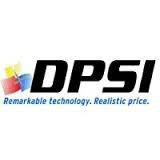Top Maintainence Management Softwares
Maintenance Management software helps organizations efficiently track and manage maintenance activities. It streamlines scheduling, work orders, and asset management, ensuring optimal equipment uptime. This software centralizes maintenance tasks, allowing users to monitor performance and predict potential issues before they arise. By providing insights into asset health, it aids in planning mainte... Read More
46 companies found
Product Description
SIMS Software aims to simplify and enhance your school's day-to-day operations. Designed specifically for academic institutions, our solution offers tools to manage everything from student records to attendance tracking, grading, and communication between teachers, students, and parents. Imagine having a single place to store and manage all the crucial details that keep your school running smoothl... Read More
Users
- • No Data
Industries
- • No Data
Market Segment
- • No Data
Verizon Connect
Product Description
Verizon Connect is a software solution designed to help businesses manage and optimize their fleet operations. If your company has vehicles on the road, this software can provide you with tools to track, monitor, and improve the efficiency of those vehicles. At its core, Verizon Connect offers real-time GPS tracking, giving you visibility into the location of every vehicle in your fleet. This mea... Read More
Users
- • No Data
Industries
- • No Data
Market Segment
- • No Data
Product Description
BigChange is a SaaS platform designed to simplify and streamline operations for businesses with mobile workforces. Think of it as a one-stop solution for managing everything from job scheduling and dispatching to tracking vehicles and managing customer relationships. If your business involves dispatching technicians, delivery drivers, or any other mobile team members, BigChange helps keep everythi... Read More
Users
- • No Data
Industries
- • No Data
Market Segment
- • No Data
Limble CMMS
Product Description
Running a maintenance team can be challenging, but it doesn’t have to be chaotic. Limble CMMS (Computerized Maintenance Management System) is designed to simplify your maintenance operations and ensure everything runs smoothly. This cloud-based software is perfect for businesses of all sizes that need an efficient way to organize their maintenance tasks. With Limble CMMS, you get an intuitive in... Read More
Users
- • No Data
Industries
- • No Data
Market Segment
- • No Data
Product Description
DPSI is a software solution designed to make maintenance management easier for businesses of all sizes. Whether you run a small facility or a large enterprise, DPSI helps you keep track of all your maintenance needs with its user-friendly, cloud-based system. The aim is to streamline your operations, reduce downtime, and ultimately save you both time and money. At its core, DPSI focuses on organi... Read More
Users
- • No Data
Industries
- • No Data
Market Segment
- • No Data
Product Description
Sockeye Software is all about making your job easier. We understand that managing various aspects of your business can be overwhelming, so we’ve created a suite of tools designed to streamline these processes. Whether you’re a small startup or a well-established company, our software adapts to fit your needs, helping you save time and focus on what really matters. What sets Sockeye apart is its u... Read More
Users
- • No Data
Industries
- • No Data
Market Segment
- • No Data
Product Description
In today's fast-paced business world, simplicity and efficiency are key. That's where Formitize steps in. Designed to make everyday business processes smoother, Formitize is an all-in-one solution perfect for companies looking to streamline their operations. Whether it's about managing forms, automating workflows, or ensuring compliance, Formitize takes the hassle out of these tasks, so you can fo... Read More
Users
- • No Data
Industries
- • No Data
Market Segment
- • No Data
Product Description
Weever is here to simplify the way businesses manage their operations with practical, user-friendly software solutions tailored for teams of all sizes. Designed to streamline processes and facilitate better organization, Weever’s software helps ensure that routine tasks are completed efficiently and accurately. Imagine making day-to-day tasks like scheduling, data collection, auditing, and proj... Read More
Users
- • No Data
Industries
- • No Data
Market Segment
- • No Data
Product Description
Partium is designed to make your life easier by streamlining the process of finding spare parts quickly and efficiently. If you've ever had trouble locating a specific part in your inventory or struggled with long searches, Partium is your solution. It simplifies spare part searches with easy-to-use features that save you time and reduce frustration. The software integrates seamlessly with your e... Read More
Users
- • No Data
Industries
- • No Data
Market Segment
- • No Data
Product Description
PubWorks is designed to make life simpler for public works departments by offering a straightforward, efficient solution for managing a wide range of municipal operations. This software helps cities and towns keep track of their assets, work orders, and fleet maintenance, all from one user-friendly platform. Think of it as a central hub where staff can easily access the information they need to do... Read More
Users
- • No Data
Industries
- • No Data
Market Segment
- • No Data
What are the key features of maintenance management software?
Maintenance management software is pivotal in optimizing the maintenance operations of an organization. It ensures that assets are effectively and efficiently maintained. Here are some critical features that define this category of software:
Asset Management
Maintainence Management software enables organizations to track and manage the lifecycle of their assets. This feature includes detailed asset profiles with information such as purchase date, warranty details, maintenance history, and more. It helps in making informed decisions regarding asset usage and maintenance scheduling.
Work Order Management
This feature allows for the creation, assignment, and tracking of work orders. Maintenance management software streamlines the process of scheduling tasks, assigning them to the appropriate personnel, and tracking their completion. It ensures that all maintenance activities are documented and easily accessible.
Preventive Maintenance
Preventive maintenance is a proactive approach that minimizes equipment downtime by scheduling regular maintenance tasks before failures occur. This feature in maintenance management software automatically generates maintenance schedules based on usage intervals or calendar dates, ensuring equipment reliability.
Inventory Management
The inventory management feature manages spare parts and inventory levels. It helps in monitoring stock levels, reordering parts when necessary, and reducing wastage. This ensures that the required parts are always available for maintenance activities and reduces asset downtime.
Reporting and Analytics
Maintenance management software provides comprehensive reporting and analytics features. These tools allow for data-driven decision-making by offering insights into maintenance performance metrics, cost analysis, and downtime trends. Reports can be customized and automated to meet specific organizational needs.
Mobile Access
With the increasing need for field operations, mobile access is a vital feature. Maintainence Management software with mobile capabilities allows technicians to access work orders, log maintenance activities, and communicate in real-time, directly from their mobile devices, enhancing their efficiency and responsiveness.
Scheduling and Planning
Effective scheduling and planning capabilities are crucial for optimizing maintenance activities. This feature allows for the efficient allocation of resources and time slots for various maintenance tasks. It minimizes conflicts and ensures that maintenance tasks are completed promptly.
Compliance Management
Maintenance activities often need to adhere to industry regulations and safety standards. Maintainence Management software helps organizations ensure compliance by tracking regulatory requirements and providing necessary documentation. This feature also assists in audit preparations by maintaining a comprehensive history of maintenance activities.
Cost Tracking
Tracking maintenance costs is essential for budget management. This feature helps in recording expenses related to labor, parts, and other associated costs. Maintainence Management software provides insights into cost trends, enabling organizations to identify areas for potential savings.
Integration Capabilities
The ability to integrate with other enterprise systems is valuable for maintaining a seamless flow of information across the organization. Maintainence Management software often offers integration with ERP, IoT, and other relevant systems, facilitating improved operational efficiency and data consistency.
These key features collectively enhance the capability of Maintainence Management software in managing maintenance activities, improving asset reliability, and reducing operational costs. Understanding these features allows organizations to select software that aligns with their maintenance management objectives.
How does maintenance management software improve equipment reliability?
Maintenance Management software significantly enhances equipment reliability through its systematic approach to maintenance activities. By automating and optimizing these tasks, the software reduces the risk of equipment failure and prolongs asset life.
Streamlined Maintenance Scheduling
Implementing Maintenance Management software allows organizations to schedule maintenance activities more effectively. Automated reminders and notifications ensure maintenance is performed on time, reducing the risk of unexpected breakdowns. By adhering to a preventative maintenance schedule, the software minimizes wear and tear, promoting longer equipment life and boosting reliability.
Data-Driven Insights
Maintenance Management software collects and analyzes data from various equipment and systems. This data provides valuable insights into equipment performance and condition. By identifying patterns and trends, organizations can anticipate potential failures and take preemptive measures, thus maintaining reliability.
Improved Inventory Management
Optimizing spare parts inventory is another way Maintenance Management software enhances reliability. By ensuring critical components are readily available, the software prevents delays in maintenance or repairs and reduces equipment downtime. This efficient management of inventory supports uninterrupted machine operations and contributes to overall equipment reliability.
Enhanced Communication and Collaboration
Maintenance Management software fosters enhanced communication among maintenance teams. The centralized platform enables team members to share insights, updates, and maintenance procedures easily. This collaboration ensures maintenance tasks are executed accurately and quickly, reducing potential errors and increasing equipment reliability.
Predictive Maintenance Capabilities
Advanced Maintenance Management software often includes predictive maintenance features. By utilizing sensors and real-time monitoring, the software can predict when equipment is likely to fail or require maintenance. This proactive approach allows maintenance teams to address issues before they lead to equipment failure, significantly enhancing reliability.
Comprehensive Record Keeping
Maintenance Management software provides detailed record-keeping capabilities. It maintains a thorough history of all maintenance activities, repairs, and updates for each piece of equipment. Access to this information allows maintenance teams to make informed decisions, ensuring that all necessary actions have been performed to maintain equipment reliability.
Regulatory Compliance and Safety Assurance
Through the use of Maintenance Management software, organizations can ensure adherence to industry regulations and safety standards. Ensuring compliance reduces the risk of equipment failure due to non-compliance and enhances overall operational safety. Reliable equipment promotes a safer working environment and fulfills regulatory requirements.
Performance Monitoring and Reporting
The ability to monitor performance in real-time and generate reports is a critical advantage of Maintenance Management software. By constantly evaluating equipment performance, organizations can detect and resolve issues promptly. Detailed reports on maintenance activities offer insights into areas that require improvement, aiding in the continuous enhancement of equipment reliability.
In summary, Maintenance Management software plays a crucial role in improving equipment reliability by streamlining scheduling, providing data-driven insights, enhancing inventory management, fostering communication, enabling predictive maintenance, offering comprehensive records, ensuring compliance, and facilitating performance monitoring.
What industries benefit the most from using maintenance management software?
Maintenance Management software is essential across various industries that require efficient management of their maintenance operations. It provides a centralized system for monitoring and maintaining equipment, ensuring minimal downtime and enhanced productivity. Below are some industries that benefit significantly from Maintenance Management software:
Manufacturing
Manufacturers depend on their machinery and equipment for continuous production. Maintenance Management software enables manufacturers to schedule and track maintenance activities, thus preventing unexpected equipment failures. By efficiently managing the maintenance of their equipment, manufacturers can ensure optimal production levels and prolong equipment life, reducing costs and maximizing efficiency.
Facilities Management
Facility managers oversee diverse building operations, from electrical systems to plumbing and HVAC maintenance. Maintenance Management software helps facility managers keep track of their maintenance tasks, ensuring that all equipment is operating smoothly. By centralizing maintenance information, this software assists in scheduling routine inspections and responding promptly to repair requests, which helps in minimizing operational disruptions and maintaining high standards of health and safety.
Healthcare
In the healthcare sector, equipment reliability and safety are critical. Maintenance Management software is used to ensure medical devices and healthcare facilities are well-maintained and comply with regulatory standards. The software assists healthcare providers in managing preventive maintenance schedules, ensuring that critical equipment remains operational and reduces risks associated with equipment failure.
Energy and Utilities
Energy and utility companies handle extensive networks of equipment and infrastructure requiring constant surveillance and maintenance. Maintenance Management software helps these companies monitor equipment condition and predict maintenance requirements through data analytics and condition-based monitoring. This proactive approach reduces outages and ensures uninterrupted service delivery.
Transportation and Fleet Management
For transportation companies, vehicle and equipment downtime can lead to significant revenue losses. Maintenance Management software aids in tracking routine maintenance schedules and inspection protocols, helping fleet managers ensure that vehicles are in top condition. This results in fewer breakdowns, improved safety, and extended vehicle lifespans.
Mining and Oil & Gas
The high-stakes environments in mining, oil, and gas industries necessitate rigorous equipment maintenance protocols. Maintenance Management software provides real-time monitoring and maintenance scheduling capabilities, helping companies minimize equipment failures, ensure worker safety, and maintain operational efficiency under challenging conditions.
Food and Beverage
The food and beverage industry requires stringent maintenance of equipment to meet health standards. Maintenance Management software assists in managing cleaning and servicing schedules for equipment and production lines, ensuring compliance with sanitation standards and minimizing risk of contamination. This contributes to the production of high-quality products and reduces waste.
Hospitality
In the hospitality industry, customer satisfaction depends on well-maintained facilities. Maintenance Management software enables hotels and resorts to maintain their premises by efficiently scheduling repairs, keeping amenities in good condition, and improving guest experiences. Prompt maintenance management helps these businesses maintain their brand reputation while optimizing operational efficiency.
Each of these industries leverages Maintenance Management software to enhance maintenance efficiency, reduce costs, and minimize downtime. By understanding the unique needs of their sectors, companies can utilize this software to achieve better control over their maintenance processes.
How can maintenance management software help reduce operational costs?
Maintenance Management software plays a crucial role in optimizing operations and reducing costs. By leveraging technical improvements and data-driven insights, this software assists organizations in managing their maintenance activities more efficiently. Here’s how it impacts operational costs:
Streamlined Workflows
Maintainence Management software centralizes and streamlines maintenance tasks. By doing so, it reduces the time and effort needed for managing and assigning tasks. This efficiency leads to lower labor costs as teams can focus on completing maintenance work rather than getting bogged down in administrative tasks. A more organized workflow translates to reduced overtime and less waste in terms of human resources.
Predictive Maintenance
Implementing predictive maintenance via Maintainence Management software helps in forecasting potential equipment failures. By predicting when a machine is likely to fail, organizations can take preventive action instead of reactive maintenance. This reduces the high costs associated with emergency repairs and unexpected downtimes. Scheduled maintenance can be done during non-peak hours, ensuring minimal disruption to production schedules.
Extended Asset Lifespan
Routine maintenance schedules enabled by Maintainence Management software ensure assets are regularly checked and serviced. This proactive approach prevents severe deterioration of equipment, thus extending their useful lifespan. Investing in maintenance rather than frequent replacements saves organizations significant capital expenses over time.
Inventory Management
With Maintainence Management software, tracking spare parts inventory becomes highly efficient. Ensuring you have the right parts in stock means tasks are completed without delay. Excess inventory ties up capital and can result in overpaying for storage space. A well-managed inventory system minimizes waste and ensures parts are used before they become obsolete.
Data-Driven Decisions
The software provides insights and analytics that guide decision-makers about where to allocate resources effectively. Facilitating data-driven decisions helps avoid unnecessary expenditures, reallocating funds where they are most needed. It democratizes access to information so that all levels of staff can participate in cost-cutting measures more effectively.
Compliance and Risk Management
Adhering to safety regulations can be costly if neglected. Maintenance Management software helps track compliance-related tasks, reducing fines associated with non-compliance. Maintaining records of safety checks and repairs helps mitigate the risk of accidents, which can entail significant legal costs and compensation claims.
Energy Efficiency
Maintainence Management software aids in monitoring and optimizing the energy usage of equipment. Energy-efficient operations result in lower utility bills, which becomes significant financial savings, especially for energy-intensive industries. By tracking performance metrics, organizations can pinpoint inefficient systems and take corrective actions.
Reduction in Downtime
Operational downtime is costly. Maintainence Management software improves uptime by ensuring regular maintenance and quickly addressing unforeseen issues. When downtime is minimized, productivity remains consistent, ensuring that operational targets are consistently met.
In summary, Maintainence Management software offers a comprehensive way to effectively manage and optimize maintenance activities, thereby reducing operational costs through streamlined workflows, preventative measures, and intelligent resource management.
What are the benefits of cloud-based maintenance management software?
Accessibility and Flexibility
Cloud-based maintenance management software offers unparalleled accessibility and flexibility. Unlike traditional software that needs installation on specific devices, cloud-based solutions can be accessed from anywhere with an internet connection. This enables maintenance teams to manage tasks and monitor systems without being tethered to a specific location. The flexibility allows for real-time updates and remote work, which is highly beneficial for teams spread across various locations.
Cost-Effectiveness
One of the significant advantages of cloud-based maintenance management software is its cost-effectiveness. These solutions usually operate on a subscription model, eliminating the need for hefty upfront costs associated with purchasing and maintaining on-premise hardware. Users can scale their subscriptions according to their needs, adding or reducing features without the expense of physical infrastructure upgrades.
Simplified Collaboration
Cloud-based systems facilitate simplified collaboration between team members. Multiple users can access and update information simultaneously, ensuring everyone is working from the most current data. This collaborative environment is enhanced with features like shared calendars and task lists, which promote better coordination and communication among maintenance teams.
Real-time Updates
Maintenance management software in a cloud setup allows for real-time updates. Any changes or updates are instantly reflected across all devices accessing the software, reducing the risk of outdated or incorrect information. This capability ensures that maintenance staff always have the most recent status updates, work orders, and inventory levels, improving decision-making and operational efficiency.
Enhanced Security
Security is a critical concern in managing sensitive maintenance data. Cloud-based solutions typically offer robust security measures, including data encryption, regular backups, and secured login protocols. These comprehensive security features protect against data loss or unauthorized access, providing confidence that sensitive information is safeguarded.
Scalability
Scalability is another prominent benefit of cloud-based maintenance management software. As businesses grow, their maintenance management needs also expand. Cloud-based solutions can easily accommodate this growth, allowing users to increase storage space, add new users, and integrate new functionalities without significant downtime or technical overhaul.
Improved Data Analysis
Data analysis and reporting are greatly improved with cloud-based maintenance management software. These systems often feature advanced analytics tools that transform raw data into actionable insights. Maintenance teams can analyze equipment performance, track work order history, and predict future maintenance needs, leading to more informed decision-making and optimized operations.
Automatic Updates and Maintenance
Cloud-based systems often come with automatic updates and maintenance. Users benefit from the latest features and security patches without manual intervention, reducing the burden on IT staff. This automatic upkeep ensures that the software operates efficiently and remains up-to-date with technological advancements.
Environmental Impact
Cloud-based solutions contribute to reduced environmental impact. By eliminating the need for extensive physical servers and minimizing paper usage (due to digital records), businesses can lower their carbon footprint. Embracing cloud technology aligns with sustainable practices, which is increasingly valued in today’s business landscape.
Overall, cloud-based maintenance management software provides numerous advantages. With enhanced accessibility, improved collaboration, and robust security features, it supports efficient and effective maintenance operations in diverse settings.
How does maintenance management software enhance safety compliance in organizations?
Maintenance Management software plays a crucial role in enhancing safety compliance for organizations. It simplifies various processes associated with maintaining equipment, managing work orders, and ensuring all safety regulations are adhered to efficiently. Below are some key ways in which it contributes to organizational safety:
Streamlined Communication
Maintenance Management software offers a centralized platform where maintenance teams and relevant stakeholders can effectively communicate. This reduces the likelihood of miscommunication, ensuring everyone involved is aware of safety protocols. The software can update stakeholders in real time about any safety issues or necessary compliance measures, leading to swift actions.
Automated Scheduling and Reminders
Keeping track of maintenance schedules manually is challenging, particularly in larger organizations. Maintenance Management software automates the scheduling of maintenance tasks and sends reminders to ensure timely checks and repairs. This prevents equipment failure and reduces risks associated with neglected maintenance, thus supporting safety compliance.
Comprehensive Record-Keeping
Maintainence Management software provides a reliable record-keeping system where data concerning equipment maintenance, performed repairs, and compliance checks are stored securely. This comprehensive record serves organizations by ensuring complete visibility into maintenance histories, thereby facilitating audits and inspections. Consequently, it ensures adherence to safety regulations and standards.
Risk Assessment and Incident Tracking
With Maintenance Management software, organizations can conduct risk assessments efficiently. The software allows for the evaluation of potential hazards associated with equipment or processes, aiding in proactive risk management. Moreover, incident tracking features log safety incidents and support ongoing analysis to prevent recurrence, bolstering safety compliance.
Standardized Processes and Protocols
Standardizing maintenance procedures through Maintenance Management software promotes consistency and adherence to safety protocols. Organizations can customize processes to align with industry regulations and internal safety policies. This standardization ensures that maintenance tasks are performed correctly and safely, reducing the risk of non-compliance.
Inventory Management
Effective inventory management is vital for maintaining the safety of equipment and processes. Maintenance Management software assists in tracking inventory levels, ensuring that spare parts, tools, and other safety equipment are available when needed. This minimizes downtime and mitigates safety risks associated with equipment delays or failures.
Training and Certification Tracking
Maintenance Management software often includes features to track personnel training and certification. This ensures that only qualified individuals perform maintenance tasks, critical for ensuring safety compliance. By regularly updating training programs and monitoring certifications, organizations reduce the probability of accidents caused by inadequately skilled personnel.
Compliance Reporting and Documentation
Generating compliance reports is significantly more manageable with Maintenance Management software. Organizations are able to produce detailed reports and documentation required for regulatory compliance. This feature not only streamlines audits but also demonstrates the organization’s commitment to meeting safety standards.
By utilizing Maintenance Management software, organizations adopt a structured and efficient approach to safety compliance. The software supports various functionalities that collectively ensure adherence to safety protocols, risk mitigation, and incident management, significantly aiding in maintaining a safe work environment.
What should I consider when choosing maintenance management software for my business?
When choosing Maintenance Management software for your business, several key considerations should guide your decision-making process. This type of software can play a crucial role in streamlining operations, minimizing downtime, and extending the lifespan of your assets. Here are some important factors to consider:
Budget and Costs
Before selecting Maintenance Management software, assess your budget and understand the total cost of ownership. Consider not just the purchase price, but also ongoing expenses including subscription fees, implementation, training, and support. Ensure that the software provides a good return on investment by improving efficiency and reducing maintenance costs.
User-Friendliness
User-friendliness is vital because the software will be utilized by various stakeholders within your organization. Opt for software with an intuitive interface that is easy to learn and use. This reduces the learning curve and ensures swift adoption by your team, minimizing disruption to your maintenance processes.
Customization and Scalability
Maintenance Management software should be customizable to fit your specific business needs. Look for software that offers customizable dashboards, workflows, and reports. Additionally, consider the scalability of the software. Your business will evolve over time, and the software should be able to grow alongside you without requiring substantial changes or upgrades.
Integration Capabilities
The ability to integrate with existing systems is crucial. Ensure the chosen software can seamlessly connect with your current business tools, such as ERP systems, financial software, and other critical management solutions. This will help maintain data accuracy and facilitate streamlined processes across multiple departments.
Mobile Access
Consider software that provides mobile access, allowing your maintenance teams to update tasks, log information, and access important data from anywhere. Mobile functionality ensures maintenance operations can continue efficiently, even when personnel are offsite.
Compliance and Reporting
Adherence to regulatory standards is often a requirement in many industries. Ensure your Maintenance Management software helps you track compliance and generate necessary reporting documents. Robust reporting features can also provide critical insights into maintenance performance and asset management.
Vendor Reputation and Support
Research the vendor's reputation before committing. Customer reviews and testimonials can give insight into the reliability of the vendor and their Maintenance Management software. Evaluate the level of technical support offered and ensure that help will be available when you need it, whether through phone, email, or chat.
Data Security
Data security is paramount. Ensure that the software complies with industry standards for data protection and offers features such as data encryption, secure user authentication, and regular software updates to safeguard against breaches.
Features and Functionality
Finally, identify the core features needed for your business operations. Essential features include work order management, inventory control, predictive maintenance, and asset tracking. Ensure the software you choose offers these functionalities to adequately support your maintenance strategy.
When choosing Maintenance Management software, carefully evaluate these considerations to make an informed decision that aligns with your business goals and operational needs.









